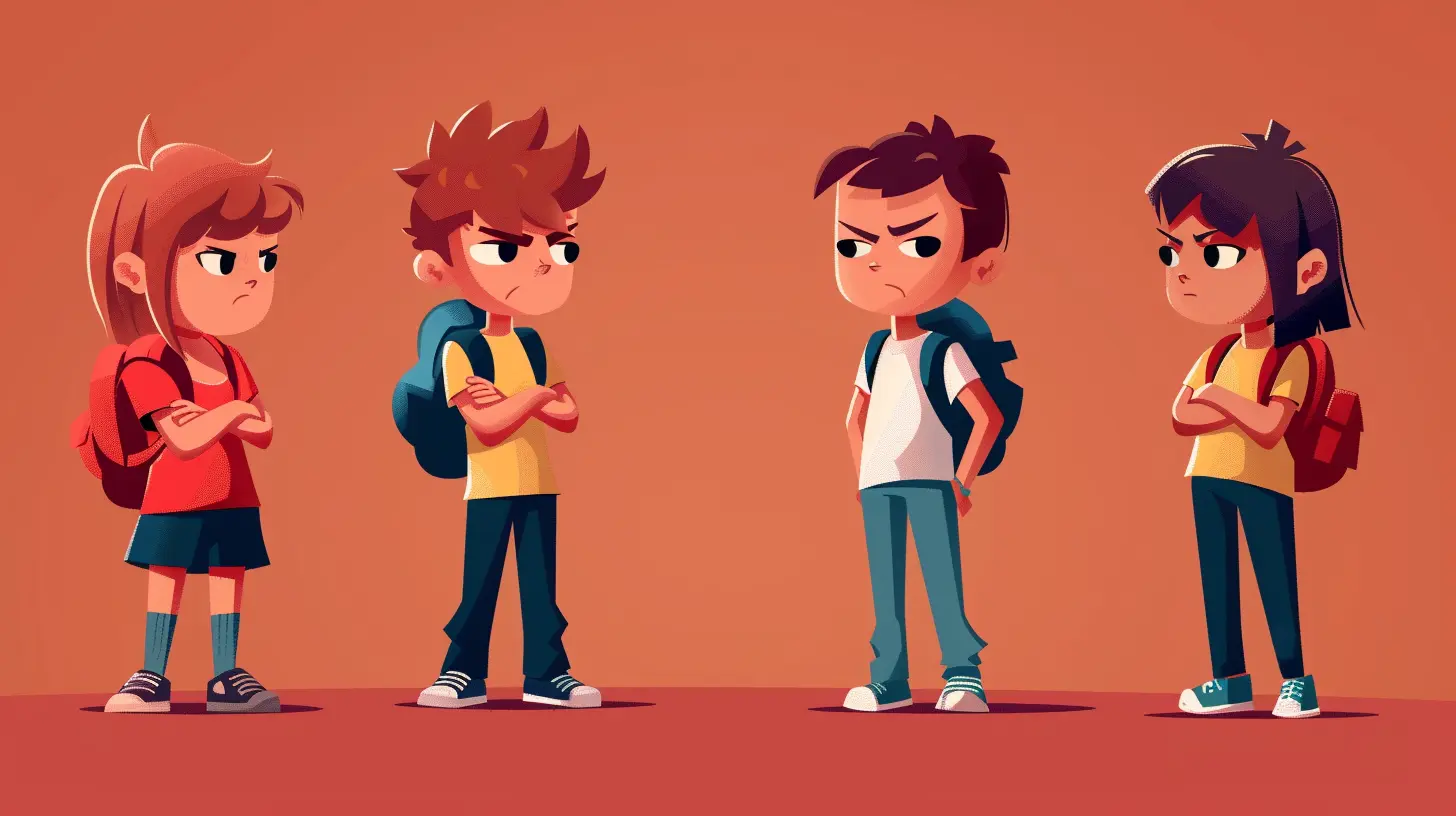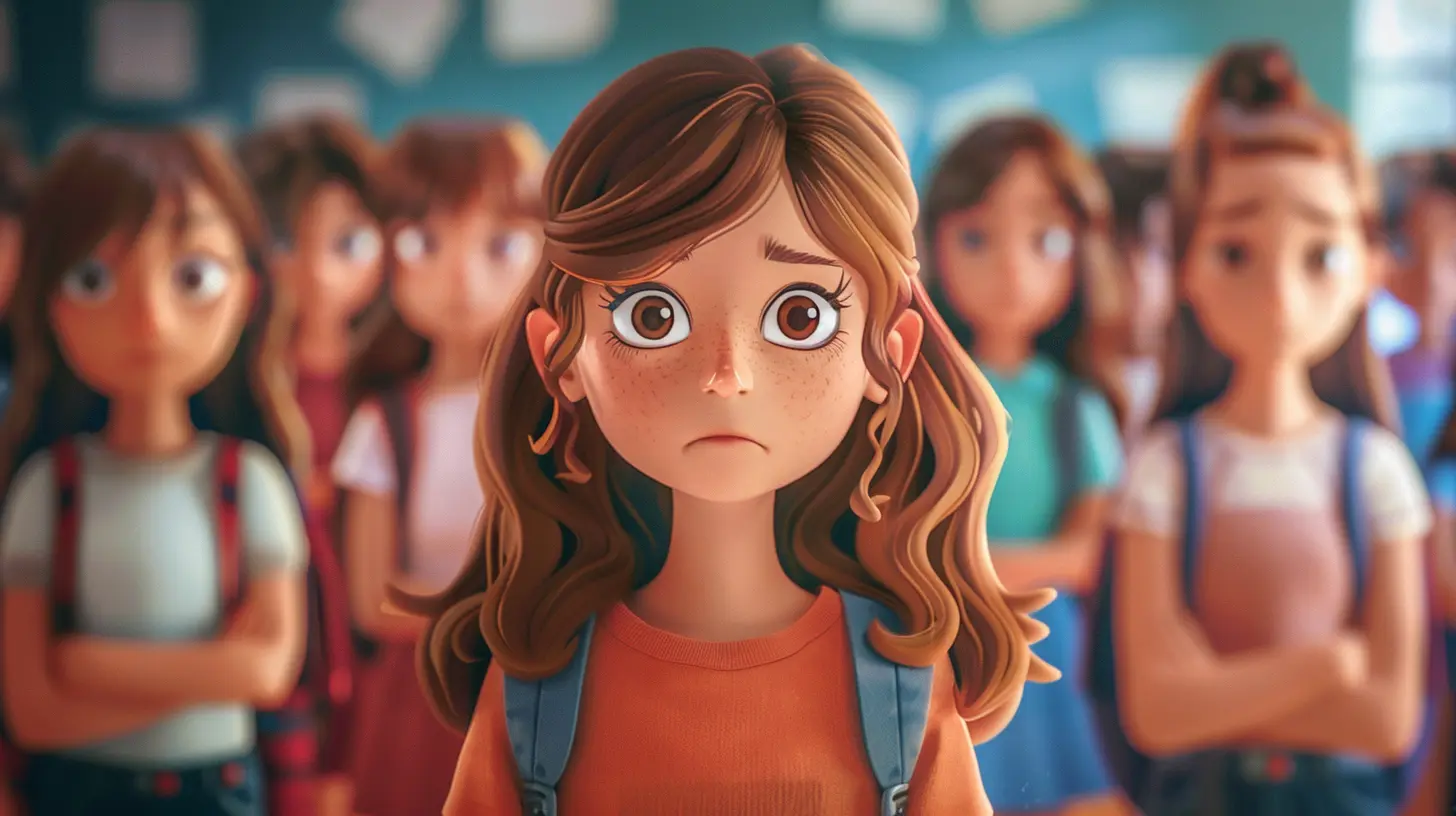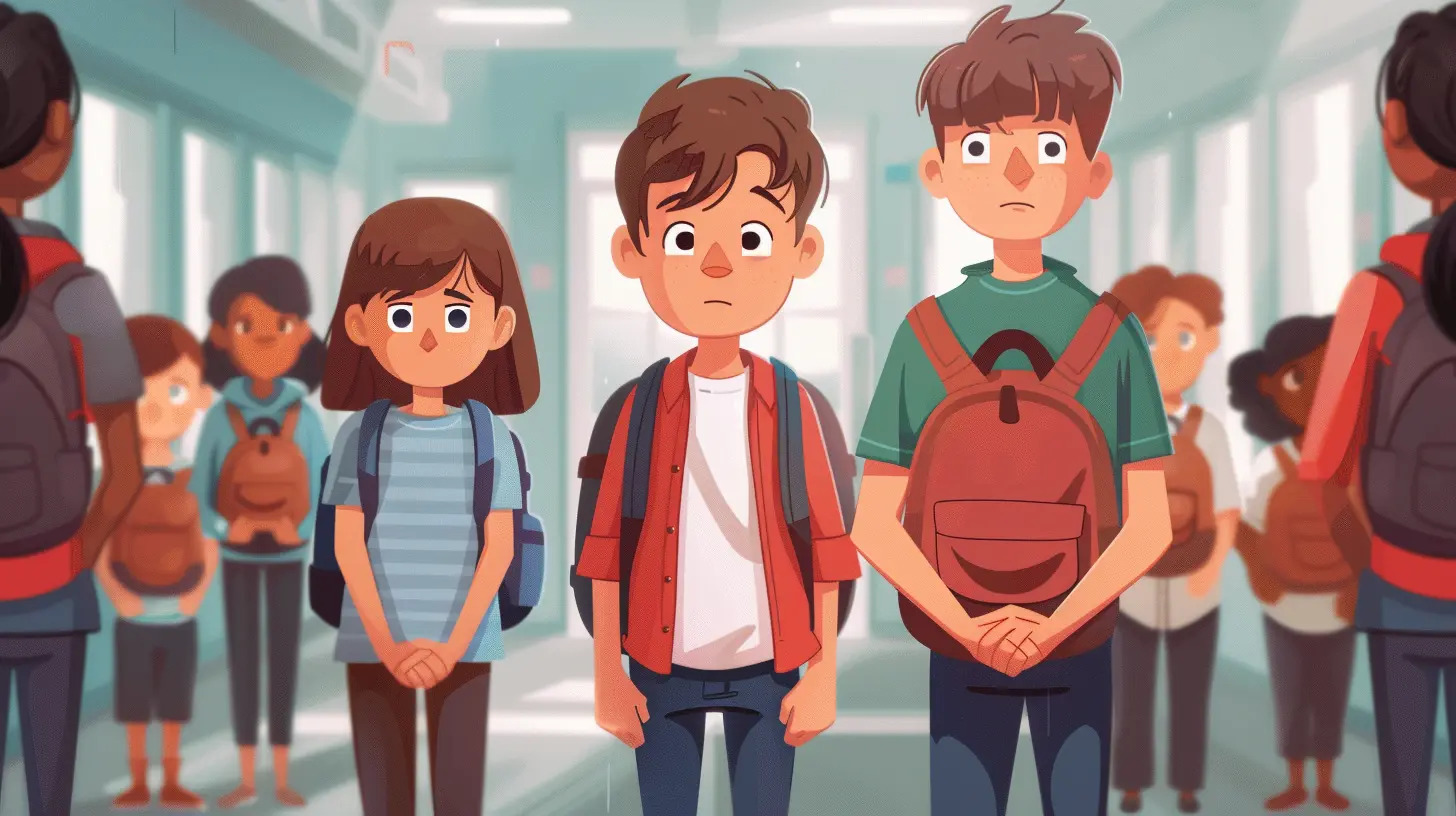How to Help Teachers Recognize Subtle Forms of Bullying
16 December 2024
Bullying. It’s a word every parent fears, and any teacher dreads encountering in the classroom. While obvious forms of bullying, like physical confrontations and openly hurtful words, are relatively easy to spot, subtle forms can go unnoticed. These subtle actions might not leave visible scars, but they can be just as damaging to a child’s emotional well-being.
So, what can we do? One of the best ways to tackle this issue is by ensuring teachers — our front-line defenders in the battle against school bullying — are fully equipped to recognize these quieter, more insidious types of bullying. Easier said than done, right? But with the right tools, mindset, and strategies, it becomes a lot more manageable.
In this article, we’ll chat about the importance of teachers recognizing subtle bullying, specific signs to look out for, and ways parents and educators can collaborate to create a safe learning environment for every child.

Why Is It So Hard to Spot Subtle Forms of Bullying?
Have you ever heard the saying, "It’s the quiet ones you have to watch"? Well, the same holds true for bullying. A child doesn’t need to be obvious to be hurtful. And often, the most effective bullies are the ones who know how to fly under the radar.Subtle bullying can come in many guises. Unlike physical bullying, there are no bruises. Unlike verbal insults, there are no loud exchanges. Instead, it might involve exclusion, whispering, eye-rolling, or spreading rumors in ways that don’t directly implicate the bully. The behaviors are covert, making them tough for teachers — who already have their hands full — to spot.
But why is it important to catch these subtle forms? Well, imagine being excluded from a group for weeks or having someone roll their eyes every time you speak. These micro-aggressions add up, crushing a child’s confidence and extinguishing their desire to participate in class or socialize with their peers.

Types of Subtle Bullying Behaviors
Let’s break down the different forms of subtle bullying to help you and teachers easily identify them:1. Social Exclusion
Social exclusion is perhaps one of the most common, yet invisible, forms of bullying. It’s when a group deliberately leaves someone out of activities, conversations, or social circles. The tricky part? Kids may not even say a word; it’s all through action (or, more accurately, inaction).Example: Imagine Susie invites all her classmates to a birthday party, except for one child. She doesn’t send a blatant message, but by excluding that child, the message is clear – "You’re not part of the group." It’s emotionally damaging, even though no harsh words were used.
2. Spreading Rumors
Words hurt, even when whispered behind backs. Rumors, whether entirely fabricated or twisted versions of the truth, can spread like wildfire through a school. The challenge here is that the damage is done in secret – without confrontation, leaving the victim to deal with the fallout alone.Example: A casual remark like, "I heard she’s cheating on the math test" can quickly alter how someone is perceived, and by the time the victim has a chance to defend themselves, the damage to their reputation is already done.
3. Body Language and Microaggressions
Sometimes, no words are needed at all. A well-timed eye-roll or a group exchanging glances can be enough to make a child feel unwelcome or humiliated.Example: A child raises their hand in class to answer a question, but when they respond, a group of students exchange smirks or roll their eyes in unison. The teacher may miss this entirely because the bully’s actions are so subtle.
4. Online or Cyberbullying
In our tech-savvy world, a great deal of bullying happens behind the safety of a screen. This can be tough for teachers to spot because it usually doesn’t occur during school hours. But that doesn’t make its impact any less harmful.Example: A group of students might create a private group chat, excluding one individual and using it to mock them behind their back. When the target finds out about the chat, they feel humiliated, but the teachers remain in the dark because it happened online.

How Teachers Can Be Trained to Recognize Subtle Bullying
Now that we’ve highlighted some subtle forms of bullying, the next step is figuring out how teachers can learn to recognize these behaviors. You might be thinking, “Teachers are already juggling a million things; how can they add one more responsibility to their plate?” Well, it doesn’t have to be as overwhelming as it sounds. Here’s how:1. Training in Emotional Intelligence (EQ)
Teachers already take on many roles — counselor, mentor, instructor — so why not add ‘emotion detective’ to the list? Training teachers to boost their emotional intelligence can help them tune in to the emotional climate of their classroom. By honing their EQ, teachers will become better at recognizing subtle shifts in group dynamics or changes in a child’s demeanor.
2. Encourage Observing Peer Interactions
Let’s face it. Teachers won’t always see what happens in the hallways or at lunchtime. But investing time to observe peer-to-peer interactions during class, group projects, or even recess can provide a wealth of insight into who’s being left out, who’s acting passive-aggressively, and who’s playing the instigator.For instance, is there one student who often finds themselves without a group during group activities? Or maybe a student who rarely gets called on when peers are asked to form partners? These moments can signal a larger, ongoing issue.
3. Fostering a Safe, Open Dialogue
Set the tone early on. Teachers should establish their classroom as a safe place where students feel comfortable reporting issues. Sometimes kids don’t speak out because they’re afraid the teacher won’t care—or even worse, will make things worse. Teachers can conduct regular “check-ins,” letting students know they can approach them with concerns without fear of retaliation.4. Anonymous Reporting Systems
While some children will feel comfortable approaching a teacher, others won’t. Having an anonymous reporting system, either online or through suggestion boxes, can give students an outlet to share what they’ve experienced or witnessed without fear of being exposed.This allows teachers to gather intel on subtler forms of bullying that might otherwise go unnoticed. It’s like providing them with a pair of secret spy glasses!
5. Understanding Group Psychology and Power Dynamics
Bullies often thrive in group settings. Teachers should be trained to recognize power dynamics and understand social hierarchies among students. By grasping these dynamics, teachers will better identify who might be using their influence to manipulate, control, or ostracize others.6. Subtle Signs from the Victim
Victims of subtle bullying often exhibit warning signs — they just tend to be more nuanced than those exhibited by victims of physical or verbal bullying. Teachers should be on the lookout for the following:- A once-participative student suddenly becomes withdrawn in class.
- Changes in seating preferences, i.e., a student moving away from a particular group.
- A student who consistently appears anxious or hesitant to engage in group activities.
- Inconsistent or evasive responses when asked about their social life.

Encouraging Parent-Teacher Communication
Teachers can’t do it all alone. Parents play a crucial role in helping identify subtle bullying. After all, a child’s behaviors at home might give clues to problems at school. Here’s how parents can work with teachers:1. Open, Ongoing Communication
Parents should foster an open line of communication with teachers. If you notice a sudden change in your child’s behavior — like a drop in self-esteem, reluctance to attend school, or social withdrawal — let their teacher know. This helps alert teachers to potential issues in the classroom.2. Support Teachers in Bullying Prevention Efforts
As a parent, getting involved in school activities shows your child values education and school community. But it can also be an invaluable opportunity to work closely with teachers to monitor classroom dynamics.3. Encouraging Your Child to Speak Up
Remind your child that their voice matters. Encourage them to approach their teacher if they feel bullied or notice someone else facing exclusion or harassment. The more proactive students are about reporting bullying, the better equipped teachers are to act.Final Thoughts
Subtle forms of bullying can be tricky to spot, but that doesn't mean they're invisible. With the right training, observation, and communication, teachers can become more aware of these less obvious behaviors, helping to put an end to the silent suffering of many students. When teachers, parents, and students work together, schools can become safer, more inclusive places where every child feels valued and protected.After all, isn’t that the kind of environment we all want our kids to be a part of?
all images in this post were generated using AI tools
Category:
Dealing With BullyingAuthor:

Zelda Gill
Discussion
rate this article
14 comments
Roxanne Cantu
Great insights! Empowering teachers to identify subtle bullying is essential for fostering a supportive classroom environment.
February 6, 2025 at 3:39 AM

Zelda Gill
Thank you! Empowering teachers is indeed crucial for creating a safe and supportive space for all students.
Galina Beck
Sure, let’s help teachers spot bullying—because apparently, a ‘mean look’ isn’t as obvious as a neon sign. Time to wake up, folks!
January 30, 2025 at 4:42 PM

Zelda Gill
I appreciate your perspective! Recognizing subtle bullying is crucial, as it often goes unnoticed. Every sign, even a "mean look," can impact a child's experience. Let's work together to raise awareness!
Lauren Coffey
Great insights! Empowering teachers to identify subtle bullying can truly make a difference in schools.
January 26, 2025 at 3:21 PM

Zelda Gill
Thank you! Empowering teachers is crucial for fostering a supportive school environment.
Leo James
Helping teachers spot subtle bullying is crucial; after all, a vigilant eye can transform a classroom. Let's empower educators to address the hidden hurts before they escalate.
January 22, 2025 at 5:31 PM

Zelda Gill
Thank you for your insightful comment! Empowering educators to recognize and address subtle bullying is indeed essential for creating a supportive classroom environment.
Clarissa Vasquez
Thank you for shedding light on such an important topic! Encouraging open communication between parents and teachers can empower us to recognize and address subtle bullying effectively. Together, we can create a safe and supportive environment for our children to thrive.
January 19, 2025 at 3:22 PM

Zelda Gill
Thank you for your thoughtful comment! I completely agree—open communication is essential in fostering a safe environment for our children.
Gwen Elliott
Thank you for this insightful article. As parents, we play a vital role in supporting teachers to create a safe environment for our children. Together, we can make a difference.
January 15, 2025 at 5:45 AM

Zelda Gill
Thank you for your kind words! Your support as parents is indeed crucial in fostering a safe environment for our children. Together, we can empower teachers to recognize and address bullying effectively.
Summer Mercado
Thank you for shedding light on this important issue. It’s crucial for us as parents to advocate for our children and help teachers recognize the subtle signs of bullying. Together, we can create a safer, more supportive environment for all students.
January 9, 2025 at 4:25 AM

Zelda Gill
Thank you for your thoughtful comment! Empowering parents and teachers to work together is essential in creating a safe environment for our children.
Violet Dodson
Empowering teachers to identify subtle bullying is crucial. Open communication between parents and educators fosters a collaborative approach, ensuring children’s emotional well-being is prioritized and protected.
January 5, 2025 at 4:23 PM

Zelda Gill
Thank you for highlighting the importance of collaboration between parents and educators in addressing subtle bullying. Open communication is indeed key to supporting children’s emotional well-being.
Alana Patterson
Great insights! Empowering teachers to identify and address subtle bullying can create a safer environment for kids. It's essential to foster open communication between parents and educators for effective solutions.
January 3, 2025 at 5:19 AM

Zelda Gill
Thank you! I completely agree—empowering teachers and fostering communication with parents are crucial steps in addressing subtle bullying effectively.
Zinnia McFarlin
This article raises important points about bullying that often goes unnoticed. I'm curious how we can empower not just teachers, but also parents and students, to identify and address these subtle behaviors together for a more supportive school environment.
December 28, 2024 at 5:16 AM

Zelda Gill
Thank you for your insightful comment! Empowering parents and students involves open communication, promoting awareness through workshops, and encouraging collaborative efforts to create a culture of support and vigilance in schools.
Kevin Nelson
Great article! It's crucial for parents to collaborate with teachers in identifying subtle bullying signs. Open communication and sharing specific examples can create a supportive environment for all children.
December 22, 2024 at 3:47 AM

Zelda Gill
Thank you! I completely agree—collaboration between parents and teachers is vital for fostering a safe and supportive environment for our children.
Shania McTier
This article highlights a crucial yet often overlooked aspect of bullying. Empowering parents to engage in dialogue with teachers fosters a collaborative approach to identifying and addressing subtle bullying.
December 20, 2024 at 5:48 PM

Zelda Gill
Thank you for your insightful comment! Collaborating with parents is indeed essential for effectively addressing subtle bullying in schools.
Elowen Hodge
Thank you for highlighting this important issue! Empowering teachers to recognize subtle bullying fosters a safer, more supportive environment for our children.
December 17, 2024 at 4:42 PM

Zelda Gill
Thank you for your thoughtful comment! Empowering teachers is indeed crucial for creating a supportive environment for our children.
Eleanor Powell
Great insights for fostering supportive classrooms!
December 17, 2024 at 3:45 AM

Zelda Gill
Thank you! I'm glad you found the insights valuable for creating supportive classrooms.
MORE POSTS

Managing Criticism: Teaching Children to Handle It with Grace

Manage Toddler Power Struggles Without a Meltdown

Finding Peace in Motherhood When Life Feels Unbalanced

Letting Your Kids Be Little Comedians (Even When You’re the Punchline)

Encouraging Creativity in Your Children Through Play

Balancing Work and Life with a Toddler at Home

The Role of Humor in Positive Parenting

Healthy Eating Habits for Parents on the Go

Teaching Your Child the Power of Self-Awareness